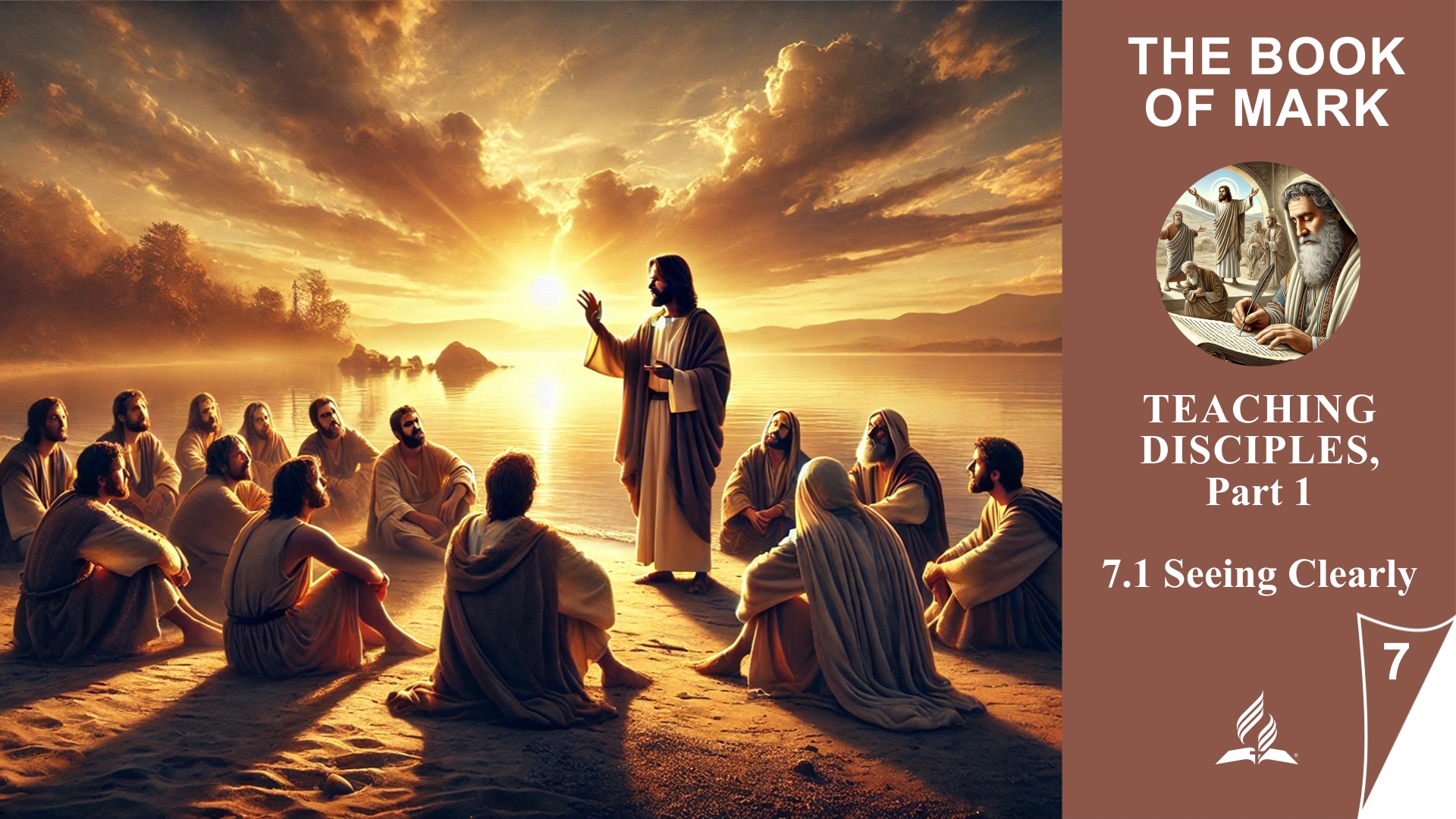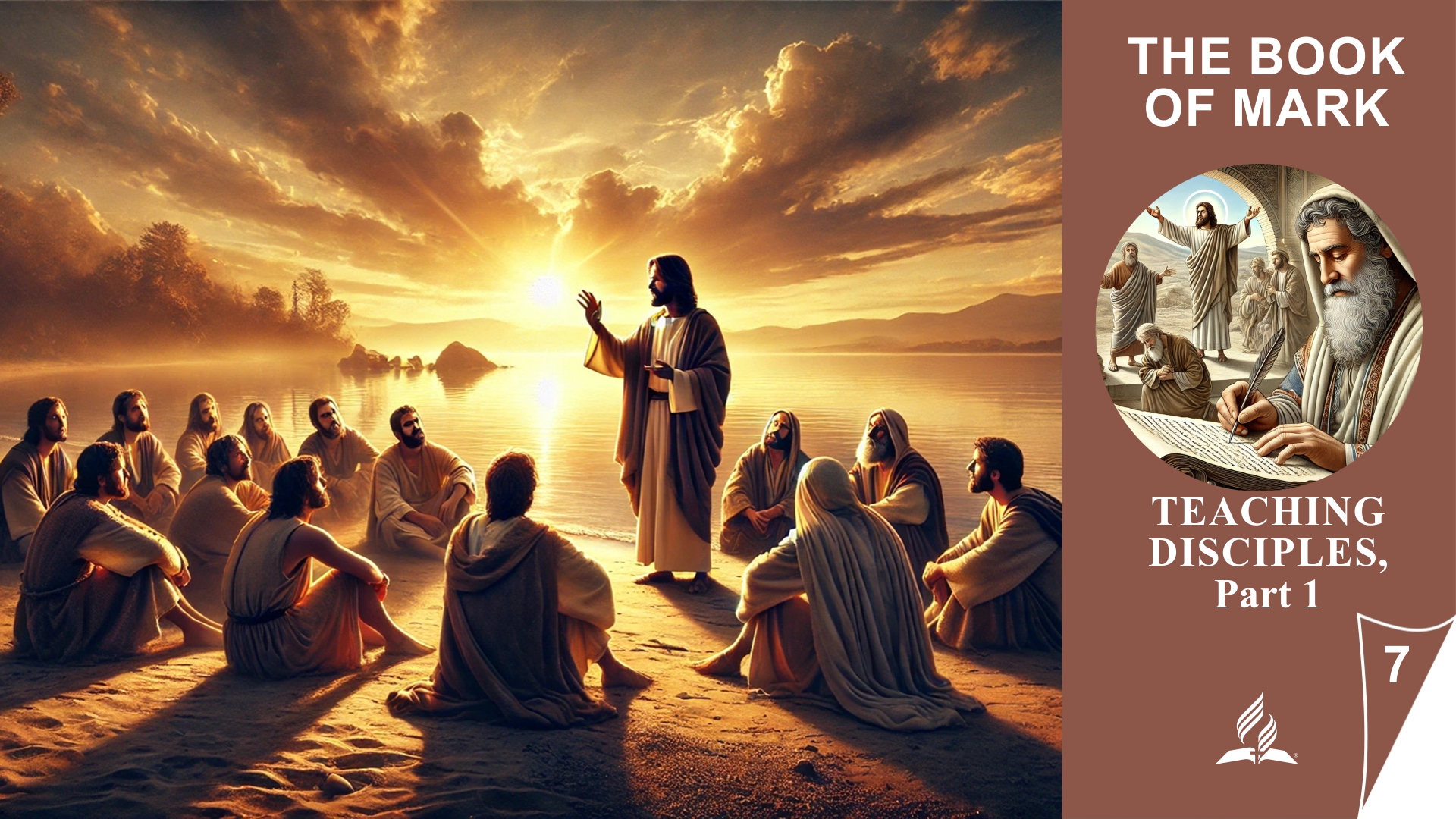


Lesson 7.Teaching Disciples, Part 1
Jesus’ Guidance for True Discipleship
In this lesson, we focus on a central aspect of Christian discipleship: teaching and the responsibility that comes with it. Being a disciple of Jesus means more than just following; it means being a lifelong learner, actively striving to deepen one’s understanding and practice of faith.
This lesson emphasizes the importance of strengthening and guiding young and new believers in their faith. Jesus himself highlighted the immense responsibility that comes with the role of a teacher or spiritual leader, especially concerning those who are still vulnerable in their faith. Jesus’ warnings about the consequences of leading others into sin demonstrate the seriousness of this task.
Additionally, this lesson addresses the radical approach to dealing with sin. Jesus uses strong imagery to make it clear that sometimes painful decisions are necessary to remain spiritually pure. This lesson challenges us to reorder our priorities and consistently avoid anything that pulls us away from God.
By the end of this lesson, we will not only better understand how to learn and grow as disciples of Jesus but also how to support and guide others on their journey. This journey of teaching and learning is essential for strengthening our own faith and fostering a strong, responsible Christian life within our community.
7.1 Seeing Clearly
The Gradual Revelation of Spiritual Insight
Read Mark 8:22–30. Why did Jesus need two touches to heal the blind man? What can we learn from this account?
The account in Mark 8:22–30 about the healing of the blind man is indeed unique and profound in its symbolic meaning. The fact that Jesus required two touches to fully heal the blind man raises an interesting question that is more related to the process of spiritual growth and understanding than to Jesus’ healing ability.
In the context of the Gospel, this two-stage healing represents a parable indicating the gradual development of spiritual understanding. The disciples, who follow Jesus, have begun to recognize His true identity, but their understanding is still incomplete—similar to the partially restored sight of the blind man after the first touch. The second touch, which leads to complete healing, symbolizes the clear and full spiritual vision that is achieved only after further revelation and deeper understanding.
This episode is set within a larger context where Jesus repeatedly announces His forthcoming Passion, which the disciples do not fully grasp. Just as the blind man is gradually healed, so must the disciples gradually open their spiritual eyes to grasp the full truth about Jesus and His mission.
Jesus’ command to keep His identity as the Messiah secret underscores the necessity of a deeper, spiritual understanding of this role. The term “Messiah” was politically charged at that time, and there was a risk that people would see Jesus merely as a political liberator rather than the suffering servant who came to bring redemption through the cross.
From this account, we can learn that spiritual insight is often a process that requires time and patience. It is a path on which God leads us gradually, so we may recognize deeper truths and our faith can mature. The story reminds us that our spiritual vision also becomes clearer through continual encounters with Jesus, and like the disciples, we must be open and ready to let go of our previous notions to receive the full truth.
What Does This Account Teach Us About Times When It Is Important Not to Say Certain Things, No Matter How True They May Be?
The account in Mark 8:22–30, particularly Jesus’ instruction to His disciples not to spread His identity as the Messiah, teaches us an important lesson about wisdom and restraint in handling the truth. There are times when, even though something is true, it is not appropriate or helpful to express it immediately. Here are some key thoughts:
-
Timing: Truth spoken at the wrong time can lead to misunderstandings or even harm. In Jesus’ case, people might have misunderstood His Messiahship, reducing it to a purely political level. They might have expected Jesus to be a political liberator driving out the Romans, which was not the goal of His mission. This account shows us that sometimes the truth needs to be withheld until the audience is ready to understand it correctly.
-
Recipient’s Maturity and Understanding: It is important to consider the maturity and understanding of those who will hear the truth. Jesus knew that His disciples and the people were not yet fully prepared to grasp the full meaning of His identity and mission. Similarly, there might be situations where we recognize that the truth is too difficult for someone to grasp or accept at the moment, and it is wiser to wait until the person is better prepared.
-
Avoiding Unnecessary Conflicts or Dangers: In some cases, speaking the truth can lead to serious conflicts or dangers that could be avoided by waiting. Jesus’ instruction to be silent about His Messiahship could also be seen as a protective measure to avoid unnecessary confrontations with political or religious authorities before the right time had come.
-
Strategic Restraint for a Greater Purpose: Sometimes, withholding information may be necessary to achieve a greater goal. Jesus knew that His mission was not to be immediately recognized as a king but as a suffering servant who would die on the cross. His restraint served the purpose of fulfilling God’s plan for the salvation of humanity.
This account reminds us that truth is not only a matter of “what,” but also “when” and “how.” It requires wisdom and discernment to know when it is right to speak the truth and when it is better to reveal it at a later time.
The story of the blind man’s healing in Mark 8:22–30 has profound implications for our daily lives and faith. It shows us that spiritual growth is often a gradual process requiring patience and openness. These lessons are directly applicable to our daily experiences and faith life:
-
Patience in Spiritual Growth: We often expect immediate changes or insights in our spiritual lives or those of others. This story reminds us that true, deep understanding and spiritual growth take time. Just as Jesus healed the blind man in two stages, our spiritual “seeing” may gradually become clearer. We should be patient with ourselves and others in the journey of faith.
-
The Need for Repeated Encounters with Jesus: Our faith and understanding develop through a continuous relationship with Christ. Like the blind man who was touched twice, we need regular encounters with Jesus to continue opening our spiritual eyes. This means setting aside time for prayer, Bible study, and fellowship to deepen our faith.
-
Wisdom in Handling the Truth: The account shows that it is sometimes wise to be restrained in sharing truths until the right time. In everyday life, this could mean being sensitive to when and how we communicate certain things. Whether in relationships, at work, or in the church, it is important to consider the timing and maturity of others to avoid misunderstandings or unnecessary conflicts.
-
Openness to Change and New Insights: The disciples had to let go of their preconceived notions of Jesus as a political Messiah to understand His true mission. Similarly, we need to be willing to reconsider our fixed ideas and beliefs to gain deeper spiritual understanding. This requires humility and a willingness to be guided by God’s Word and the Holy Spirit.
-
God’s Greater Plan: Just as Jesus withheld His identity to fulfill God’s greater plan of redemption, we might encounter situations where restraint or patience is necessary to serve a higher purpose. This reminds us that God’s ways and thoughts are often higher than ours (Isaiah 55:9), and we can trust that His timing is perfect.
In summary, this story teaches us that the path of faith is a process requiring patience, wisdom, and openness. In our daily lives, this means being mindful of our words and actions, being patient with spiritual growth, and remaining open to deeper insights as God reveals them to us step by step.

True understanding often grows slowly, but each step along the way brings us closer to God’s clear vision for our lives.
Visited 62 times, 1 visit(s) today








